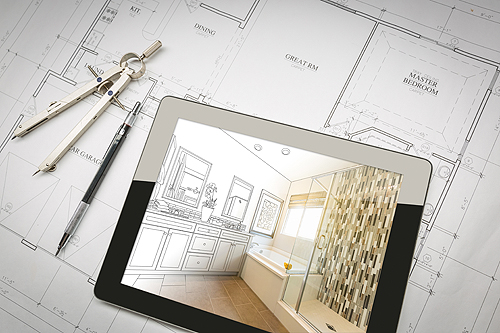Making a Profitable Bid on a Home Remodeling Project
When they underbid remodeling jobs, builders lose money and waste time they could have spent on higher-paying projects. Unfortunately, when they overbid, builders risk losing out to competitors. To ensure your remodeling bids accurately reflect materials, man-hours and more, follow these guidelines when bidding on new projects.
Start with a walk-through. Before you do anything, plan a quick walk-around with the client to assess whether the job is appropriate for your business. This will help you better understand the client’s desires and expectations. It will also give you a chance to evaluate the starting condition of the home and determine whether the client will be difficult to work with. During the walk-through, you should be looking for any area which may require the attention of subcontractors. You should also ask plenty of questions to help you understand the expectations of the job before you bid.
Calculate the raw costs. Is the client asking for new kitchen appliances, hardwood flooring or marble tile? Every remodeling project requires a certain amount of supplies, paperwork, man-hours and project management. These days, you can leverage construction bidding software to help you manage these variables. You can also use construction bidding software to make quick changes to the job further down the line. For instance, if your client asks for a different type of flooring or appliance, you can use the software to alter the estimate, instead of having to repurpose the whole proposal.
Evaluate your profit margin. Many homeowners expect contractors to charge 10% for expenses and another 10% for profits. In reality, the typical remodeling job will come with overhead expenses ranging from 20% to 55% of a contractor’s revenue. Unless you are especially efficient or lucky, you will struggle to maintain more than a 3% profit margin. Don’t risk this slim margin by trying to undercut your competition. Although knowing your competition’s prices may make it hard for you to inflate your bid, remember that they are grappling with the same markup difficulties.
Present your bid. Once you tally up every single cost and make sure you will be able to earn a profit, it’s time to make a bid. Try to remember that presentation goes a long way toward giving clients confidence in your ability to do the job right. Use construction management software or an online template to make your final proposal look professional. Whatever option you choose, be sure it includes each of the following:
- An itemized explanation of all costs
- A detailed payment schedule
- Clear payment requirements
- Suppliers, if required
- Clear language explaining whether costs are fixed or merely estimated prices
Talk to the client. The standard remodeling client is not going to be a construction expert. Sit down and talk through every item on your bid sheet to make sure the client understands every cost. Patiently answer his or her questions and consider requests. Then, give the potential client time to decide whether he or she wants to move forward with your company.
2-10 HBW offers comprehensive Systems and Appliances Home Warranties to help protect your clients from unexpected repair and replacement costs. Contact us to learn more.








